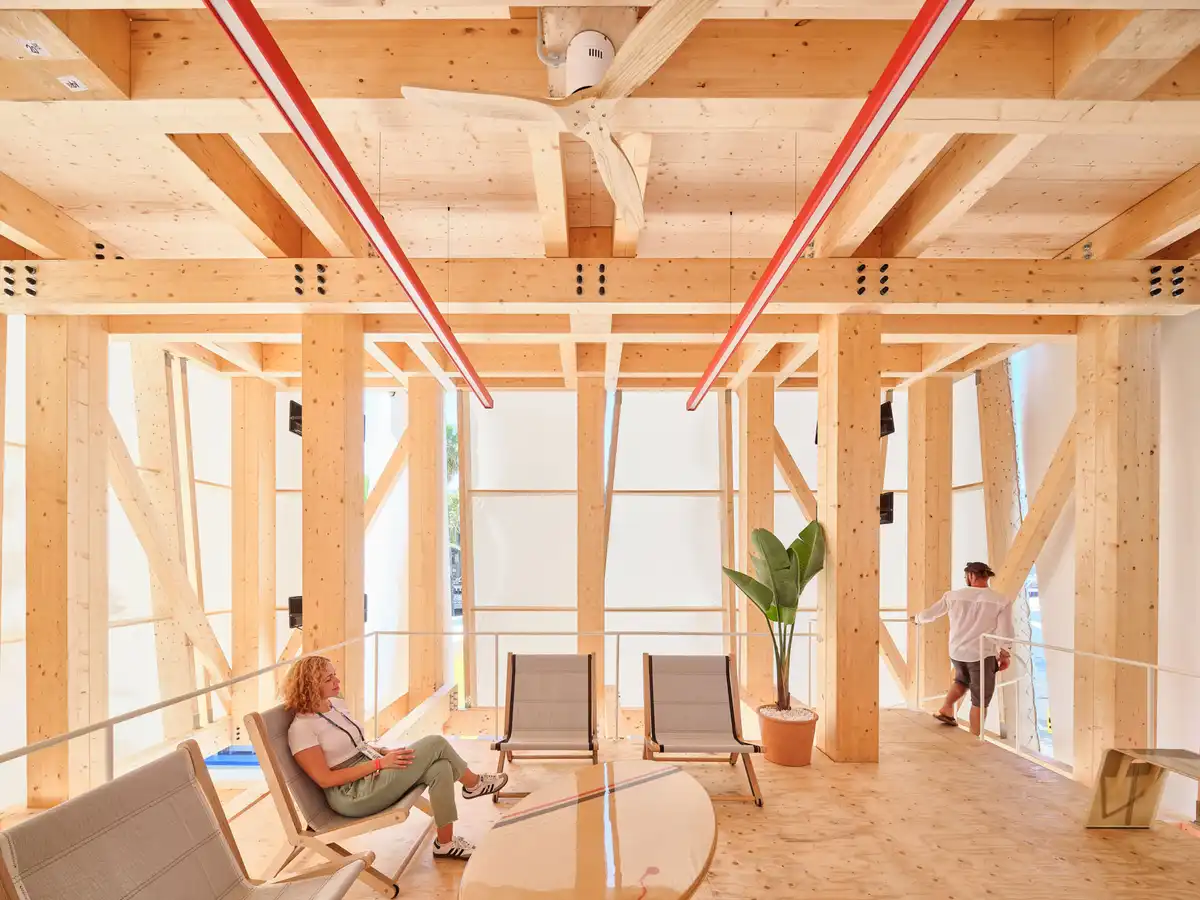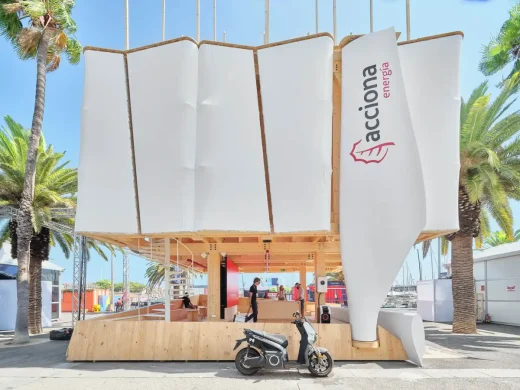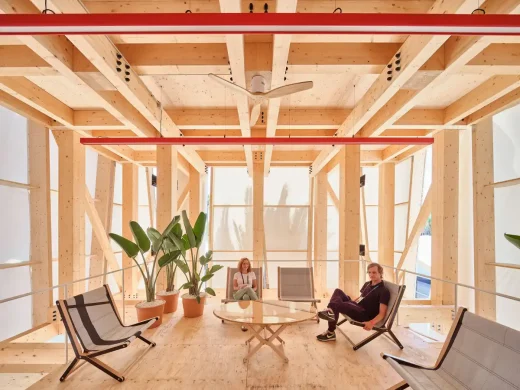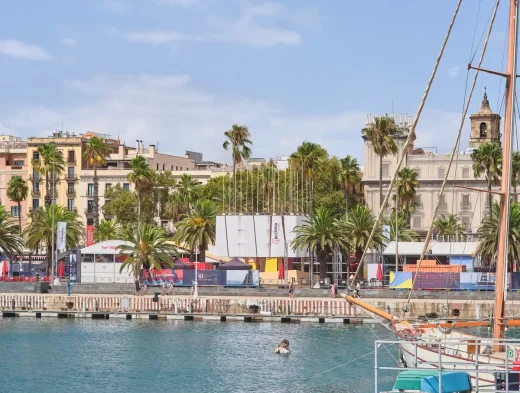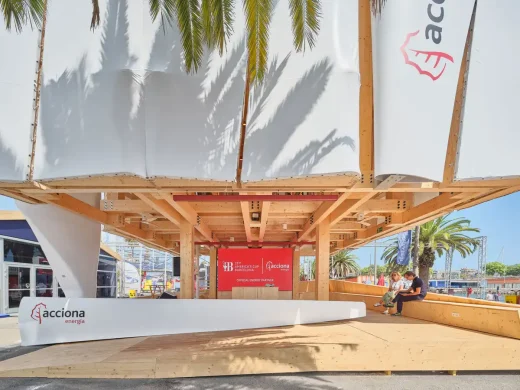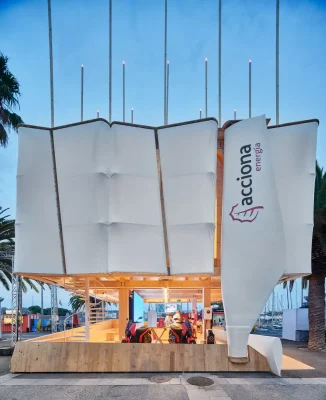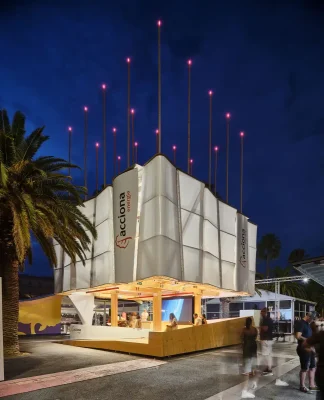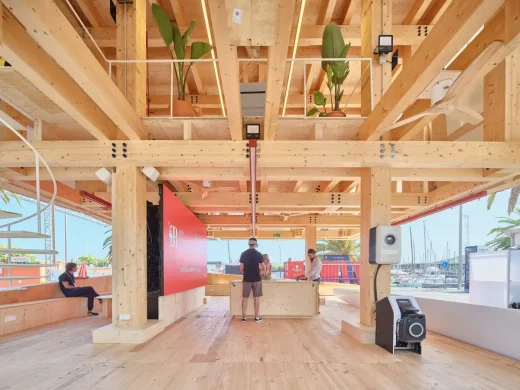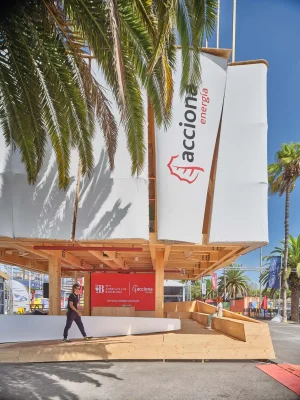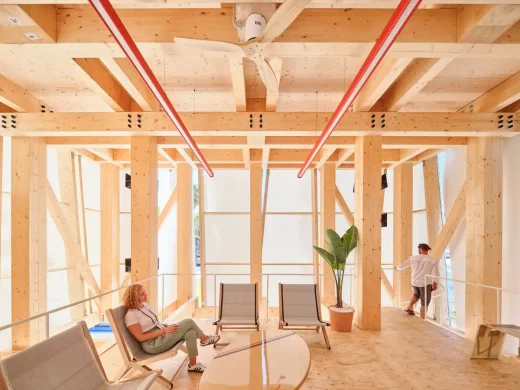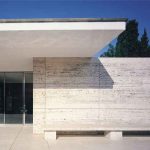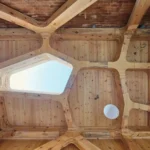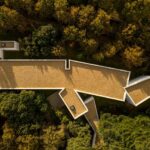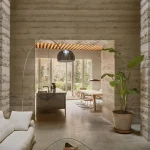ACCIONA Energía Pavilion building design, Moll de la Fusta Barcelona, Catalan architecture
ACCIONA Energía Pavilion building
9 December 2024
Architects: Institute for Advanced Architecture of Catalonia (IAAC)
Location: Barcelona, Spain
Photos by Adrià Goula
ACCIONA Energía Pavilion, Moll de la Fusta, Barcelona
The IAAC builds an ephemeral carbon-negative pavilion for ACCIONA Energía
ACCIONA Energía Pavilion, designed by IAAC. Moll de la Fusta, Barcelona (Spain). Photography: Adrià Goula
Barcelona – Located in the Moll de la Fusta, within the Port of Barcelona, the ACCIONA Energía pavilion is a physical and digital platform to engage with millions of visitors. Taking advantage of its modular, lightweight design, the structure can be assembled and disassembled with ease—an ideal trait for ephemeral architecture.
The facility, designed and built by Institute for Advanced Architecture of Catalonia (IAAC), stands out for its avant-garde design that captures the movement of the wind, the circularity of materials and the use of renewable energy. Among the most innovative elements of the structure are the recycled blades from El Cabrito wind farm in Tarifa (Cádiz), one of the oldest in Spain, which have been reused as part of the structure, showing how wind turbine blades can have a second life in new infrastructures.
The use of a natural material such as timber and recycled textiles has meant that the construction of this pavilion has a carbon footprint up to 50 times smaller than if it had been manufactured with traditional materials such as steel, aluminum, plastics and non-recycled textiles. Furthermore, the integration of photovoltaic panels on the roof allows the pavilion to generate its own energy, a gesture of self-sufficiency that reflects the spirit of renewable energy production.
Ecological and Material Innovation
The timber used in the pavilion’s construction comes from sustainably managed forests, with CLT from Xilonor used for the podium and GLAM from Madergia for the main structure. This material palette is not only environmentally sound but also lends the structure a natural beauty and warmth—qualities often absent in conventional corporate architecture. These design choices result in a carbon-negative pavilion, that stores more CO2 than was emitted during its construction.
The emissions generated in the construction of the pavilion are approximately 25 tons of CO2. A figure well below what would have been expected when doing it with other materials such as aluminum, steel, no-recycled textiles and plastic, which would have reached emissions of up to 50 times more.
The pavilion incorporates several strategies that push the envelope of sustainable design:
- Reused wind turbine blades: These blades forge a direct link to ACCIONA Energía wind energy expertise while contributing to the circular design by repurposing decommissioned components. They also serve a practical function as part of the facade ventilation system.
- Passive cooling: The pavilion’s design maximizes the use of natural airflow from the nearby sea, reducing the need for energy-intensive cooling systems. Facade openings and a raised podium further enhance the cooling effect, ensuring thermal comfort for visitors.
- Mass timber construction: The use of carbon-storing timber in the structure—sourced from certified renewable forests—demonstrates how bio-based materials can contribute to reducing the building’s overall carbon footprint. Perhaps the unique element of the pavilion is its ability to record the movement of the wind. The wooden posts on the exterior of the pavilion sway in response to the breeze, creating a dynamic visual spectacle that reflects the movement of the wind turbines. As the wind changes, so does the pavilion’s aesthetic, turning it into a living structure, an expression of the natural forces that drives both yachts and energy networks.
An ephemeral pavilion with a lasting message
In terms of visitor experience, the pavilion operates on several levels. The first floor is a welcoming space with interactive exhibits while offering a cool, shaded respite from the Mediterranean sun. The upper level is reserved for guests and corporate meetings.
Though the pavilion is a temporary installation, it carries a message with lasting impact. Its ecological design principles, use of biological materials, and focus on circularity reflect a vision for the future of architecture—one where buildings are not just structures but responsible actors in the climate challenge. The pavilion’s modularity ensures that it can be reused in future events, furthering ACCIONA Energía goal of sustainable urban development.
Photography: Adrià Goula
Relevant data
About ACCIONA Energía Pavilion
The pavilion has 100 square meters. The used materials in the construction include:
- 28,000 kg of laminated spruce wood that absorbed more tan 70 tons of CO2 during its life cycle. Half of this wood is recycled.
- 110kg of high tenacity recycled polyester fabric.
- 4 wind blades that avoided 2,045 tons of CO2 each during their useful life.
In addition, the pavilion has a solar installation on its roof with capacity of 12kWp.
Carbon-negative pavilion
It’s a carbon-negative pavilion, the materials store more CO2 than was emitted during its construction (less than 25 tons of CO2):
- The timber used absorbed 70 tons of CO2 during its life cycle.
- Each of the reused wind blades avoided 2.045 tons of CO2 during their life cycle.
- If the same pavilion had been built using traditional materials such has aluminum, Steel, non-recycled textiles and plastic, up to 50 times more CO2 emissions would have been generated tan using Wood, recycled textiles and reused wind turbine blades.
IAAC
The Institute for Advanced Architecture of Catalonia (IAAC) is a center of research, training, production and communication, located in Barcelona with 22 years of activity. Its objective is to lead the mission of imagining the future habitat of our society and building it in the present.
IAAC follows the digital revolution at all scales to push the boundaries of architecture and design to meet the challenges that humanity faces. IAAC is an experimental and experiential center where you learn by doing, through a testing methodology that promotes real solutions.
ACCIONA Energía Pavilion building, Moll de la Fusta – Building Information
Project credits:
Project for: ACCIONA Energía
Design by: Urbanitree: Daniel Ibañez, Vicente Guallart, Santiago Aguirre, Marc Bielsa, Jesus Mora, Paulina Sevilla
Project by: Institute for Advanced Architecture of Catalonia (IAAC): Daniel Ibañez, Vicente Guallart, Oriol Carrasco, Manuel Novelo, Swohmchattopadhyay, Jesse Cotey, Philipp Wienkamper, Didac Torrent, Shyam Zonca, Andrea Rubio, Sbusiso Sapphire Bhembe, Indraneel Joshi, Laia Pifarré, Bruno Ganem, Wilfredo Rodriguez, Jorge Ramirez, Daniel Sallés, Xavier Marco,
Collaborators:
Structure: Estudi m103
Facade: Bat Spain & Serge Ferrari Textiles
Timber Engineering: Madergia & Tallfusta
Engineering services: Socotec
Assembly: Madergia & Egoin
CLT: Xilonor
Lighting: Luz Negra
Electrical: Montpart
Photography: Adrià Goula
Communication: Pati Núñez Agency
Additional information
Social Media IAAC
ITG: @iaacbcn
LKN: @institute-for-advanced-architecture-of-catalonia
TW: @iaac
FBK: @Iaac.BCN
YT: @iaacat
ACCIONA Energía Pavilion building, Moll de la Fusta images / information 091224
Location: Barcelona, Catalunya, North East Spain, south western Europe
Barcelona Building Designs
CORA (Cathedral of Robotic Artisans), Parc de Collserola
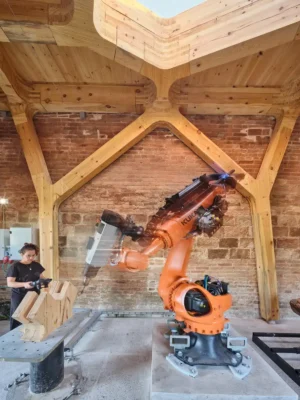
photo : Adrià Goula
Barcelona Architecture – recent selection from e-architect:
Modulus Matrix Social Housing, Cornellà
Architects: Peris + Toral Arquitectes
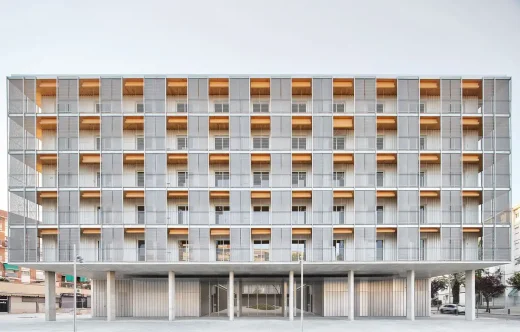
photo © José Hevia
Modulus Matrix Social Housing
Quayola Casa Batlló façade mapping
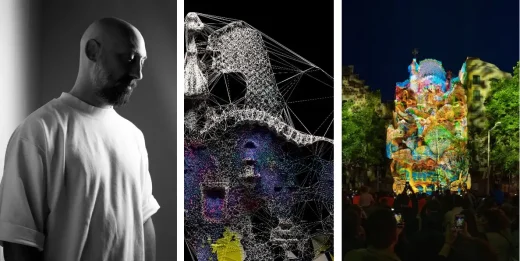
image : Claudia Maurino
Casa Batllo: Gaudi building
Casa ACAP, Das
Architects: Alventosa Morell arquitectes
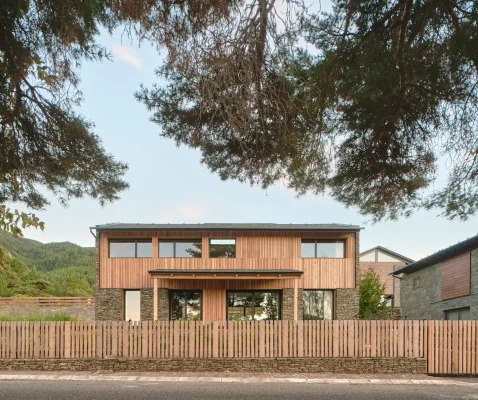
photo : Adrià Goula
Casa ACAP, Catalunya
Casa 1736
Architects: HARQUITECTES
Casa 1736, Barcelona luxury home
Sagrada Familia Photos
Sagrada Familia
Catalan Architecture
Barcelona Architecture Walking Tours by e-architect guides for pre-booked visiting groups
Comments / photos for the ACCIONA Energía Pavilion building, Moll de la Fusta page welcome.

